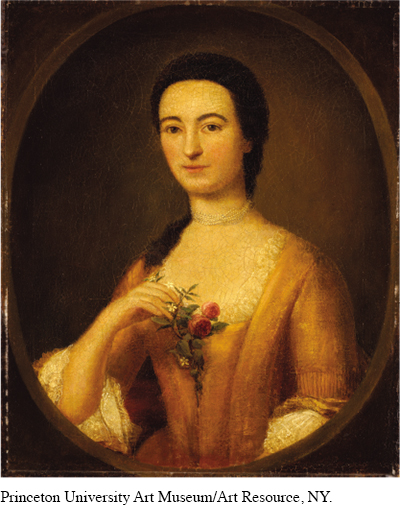The American Promise: Printed Page 201
The American Promise, Value Edition: Printed Page 187
The American Promise: A Concise History: Printed Page 214
Who Are “the People”?
The American Promise: Printed Page 201
The American Promise, Value Edition: Printed Page 187
The American Promise: A Concise History: Printed Page 214
Page 201When the Continental Congress called for state constitutions based on “the authority of the people,” and when the Virginia bill of rights granted “all men” certain rights, who was meant by “the people”? Who exactly were the citizens of this new country, and how far would the principle of democratic government extend? Different people answered these questions differently, but in the 1770s certain limits to political participation were widely agreed on.
One limit was defined by property. In nearly every state, voters and political candidates had to meet varying property qualifications. In Maryland, candidates for governor had to be worth the large sum of £5,000, while voters had to own fifty acres of land or £30. In the most democratic state, Pennsylvania, voters and candidates simply needed to be property tax payers, large or small. Only property owners were presumed to possess the necessary independence of mind to make wise political choices. Are not propertyless men, asked John Adams, “too little acquainted with public affairs to form a right judgment, and too dependent upon other men to have a will of their own?” Property qualifications probably disfranchised from one-
Another exclusion from voting—

Only three states specified that voters had to be male, so powerful was the unspoken assumption that only men could vote. Yet in New Jersey, small numbers of women began to go to the polls in the 1780s. The state’s constitution of 1776 enfranchised all free inhabitants worth more than £50, language that in theory opened the door to free blacks and unmarried women who met the property requirement. (Married women owned no property, for by law their husbands held title to everything.) Little fanfare accompanied this radical shift, and some historians have inferred that the inclusion of unmarried women and blacks was an oversight. Yet other parts of the suffrage clause pertaining to residency and property were extensively debated when the clause was put in the state constitution, and no objections were raised at that time to its gender-
In 1790, only about 1,000 free black adults of both sexes lived in New Jersey, a state with a population of 184,000. The number of unmarried adult white women was probably also small and comprised mainly widows. In view of the property requirement, the voter blocs enfranchised under this law were minuscule. Still, this highly unusual situation lasted until 1807, when a new state law specifically disfranchised both blacks and women. Henceforth, independence of mind, held essential for voting, was redefined to be sex-
In the 1780s, voting everywhere was class-
The American Promise: Printed Page 201
The American Promise, Value Edition: Printed Page 187
The American Promise: A Concise History: Printed Page 214
Page 202